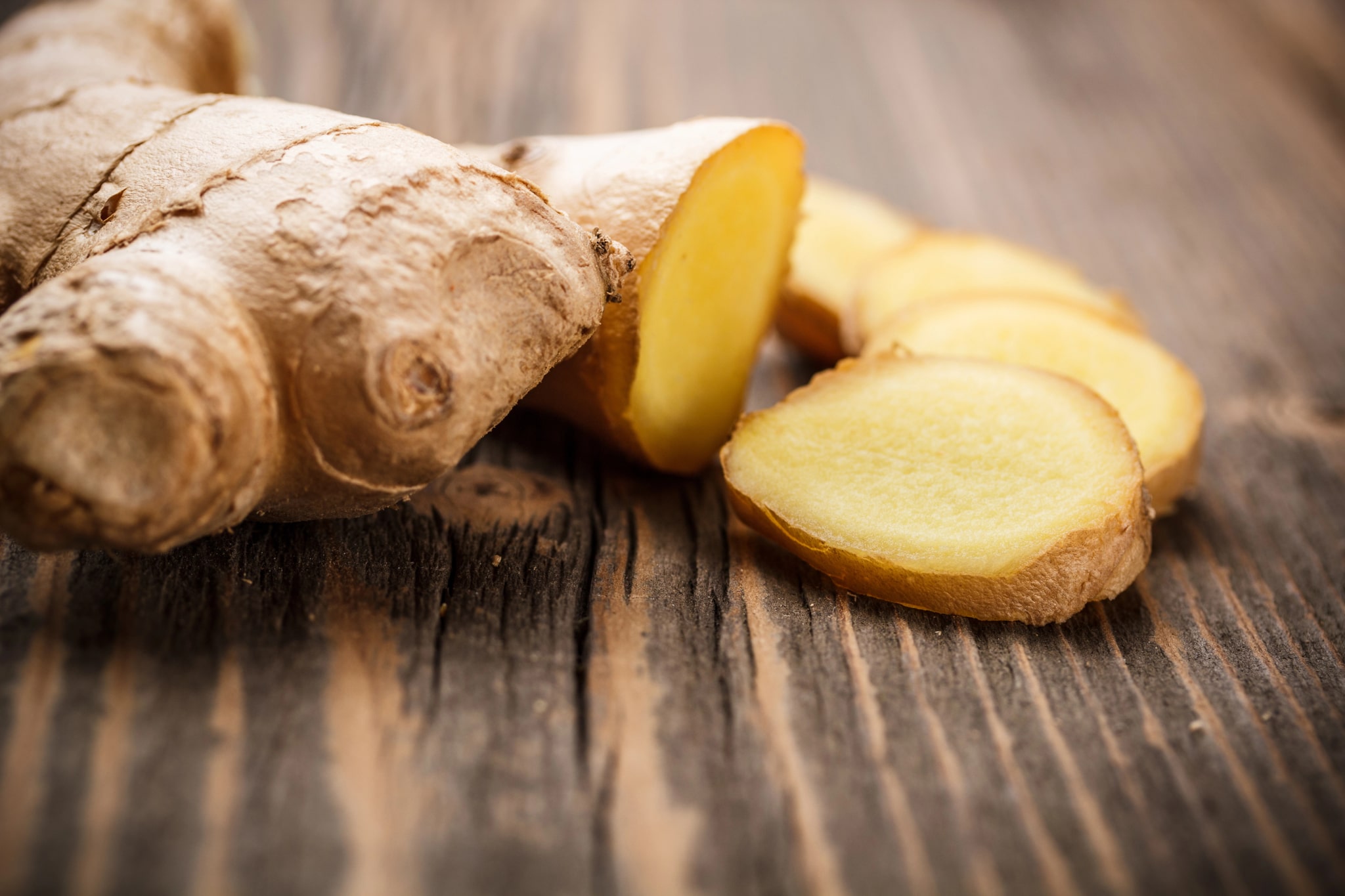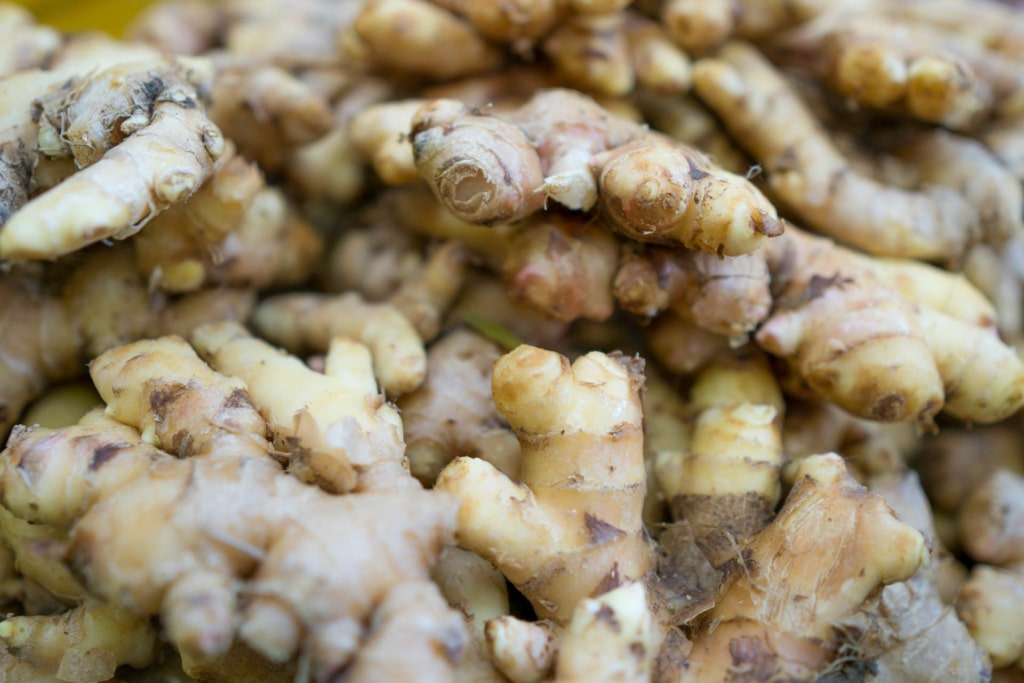
Imagine walking through an ancient spice market, where the air is thick with the scent of exotic herbs and roots. Among the vibrant displays, one root stands out with its distinct, invigorating aroma: Ginger. For thousands of years, this humble root has been cherished not only for its culinary zest but also for its powerful medicinal properties.
Did you know that Ginger has been used for over 2,000 years in both aromatic medicine and the culinary world? Ginger is one of the few herbal remedies featured in all 4 major ancient traditional medicine systems: Chinese, Ayurvedic, Greek, and Unani Tibb. These diverse traditions all remarkably agree on one thing: Ginger’s warming qualities.
Today, modern research is catching up with what ancient cultures have known for centuries. Studies show that Ginger is a powerhouse of health benefits, from improving digestion and boosting immunity to reducing inflammation and promoting pain relief. But Ginger’s versatility doesn’t stop at the kitchen—its aromatic and therapeutic qualities make it an invaluable tool in herbalism and aromatherapy as well.
Whether you’re looking to boost your health naturally or incorporate Ginger into your wellness routine, this article will explore the incredible benefits of Ginger root and offer practical ways you can use it in your life. You’ll also learn the best way to prepare Ginger root tea, plus we share a simple tasty Ginger chew recipe! Ready to unlock the secrets of this powerful root? Let’s dive in!
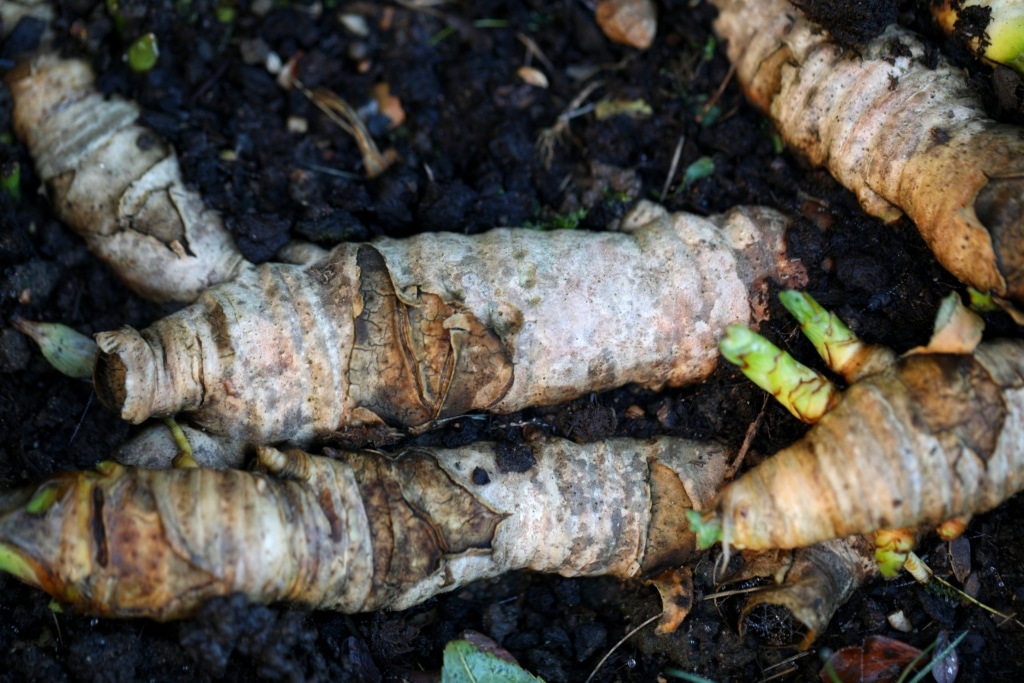
Ginger Botany: How Ginger Grows
Ginger is a tropical perennial herbaceous plant from the Zingiberaceae family, which also includes Turmeric and Cardamom. The Ginger plant thrives in warm, humid climates and is thought to be native to the tropical regions of Southeast Asia. But here’s a fun fact – what we commonly call "Ginger root" isn’t actually a root at all! Botanically speaking, it’s a rhizome – an underground stem.
While both roots and rhizomes grow beneath the soil, they have distinct differences. Roots typically grow straight down and primarily anchor the plant, whereas rhizomes spread horizontally, sending out both roots below and new shoots above the ground. This unique growth pattern allows Ginger to multiply and thrive, making it a resilient plant.
The Ginger plant typically grows 3 to 4 feet tall, adorned with long, glossy green leaves and delicate pale yellow or white flowers nestled beneath protective bracts. Beneath the soil, its rhizomes spread laterally just below the surface. When young, these rhizomes are plump, juicy, and mildly flavored, but as they mature, they become drier, more fibrous, and develop a bolder, spicier heat.
Ginger’s rhizomes are encased in a corky, golden-brown skin, revealing a vibrant yellow interior with a warm, citrusy, and slightly peppery aroma. Harvesting typically occurs when the plant’s foliage begins to yellow and die back – around 8 to 10 months after planting. Once unearthed, the rhizomes are carefully washed, dried, and prepared for market, where they are sold fresh or processed into dried chips, powdered spice, preserves, essential oil, or hydrosol.
The Health Benefits of Ginger Root
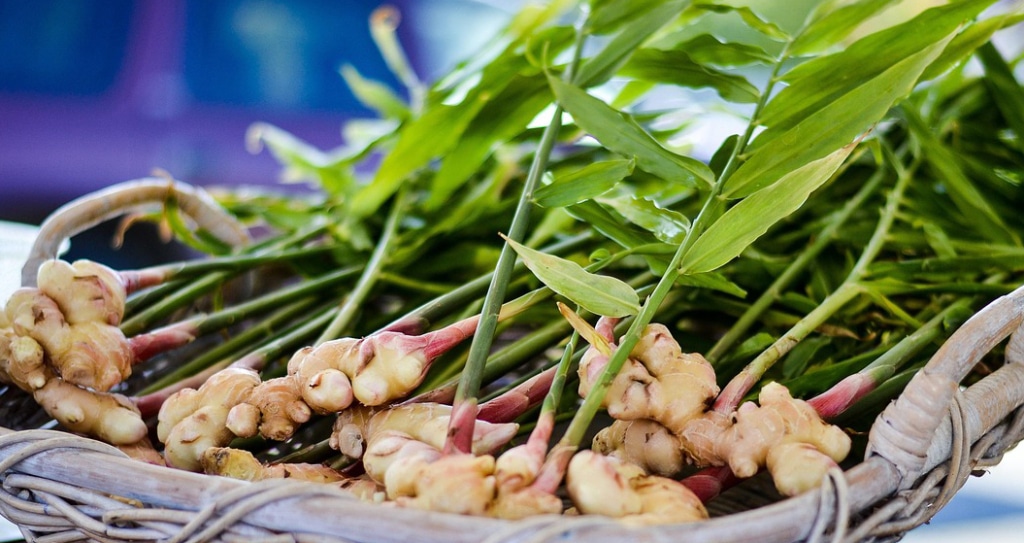
Ginger Root Benefits for Digestion
Ginger root is one of the most commonly used herbs in Ayurveda and Traditional Chinese Medicine to support digestive health. Whether consumed as a tea, tincture, or fresh or dried root, Ginger is a warming, stimulating remedy that not only calms digestive distress but also strengthens the overall digestive process. Ginger can stimulate saliva production (commonly called a sialogogue in herbalism), jumpstarting the digestive process before food even reaches the stomach. Additionally, Ginger acts as a stomachic, enhancing appetite and encouraging sluggish digestion to move along more smoothly.
For those struggling with bloating and gas, Ginger’s carminative properties help ease discomfort by dispelling trapped air in the digestive tract. Perhaps most famously, Ginger is one of the most well-researched herbal remedies for nausea and vomiting, with clinical studies confirming its effectiveness for morning sickness, motion sickness, and even chemotherapy-induced nausea [1] [2] [3].
Beyond symptom relief, Ginger supports deeper digestive function by improving nutrient absorption and assimilation. Certain compounds in Ginger are believed to accumulate in the digestive mucosa, where they enhance the body’s ability to process nutrients more effectively. This makes Ginger particularly beneficial for those with conditions linked to poor digestion, such as indigestion, constipation, chronic gastritis, IBS, and malabsorption. Its anti-inflammatory, analgesic, and anti-spasmodic properties also help soothe digestive pain, including cramping, intestinal colic, and discomfort.
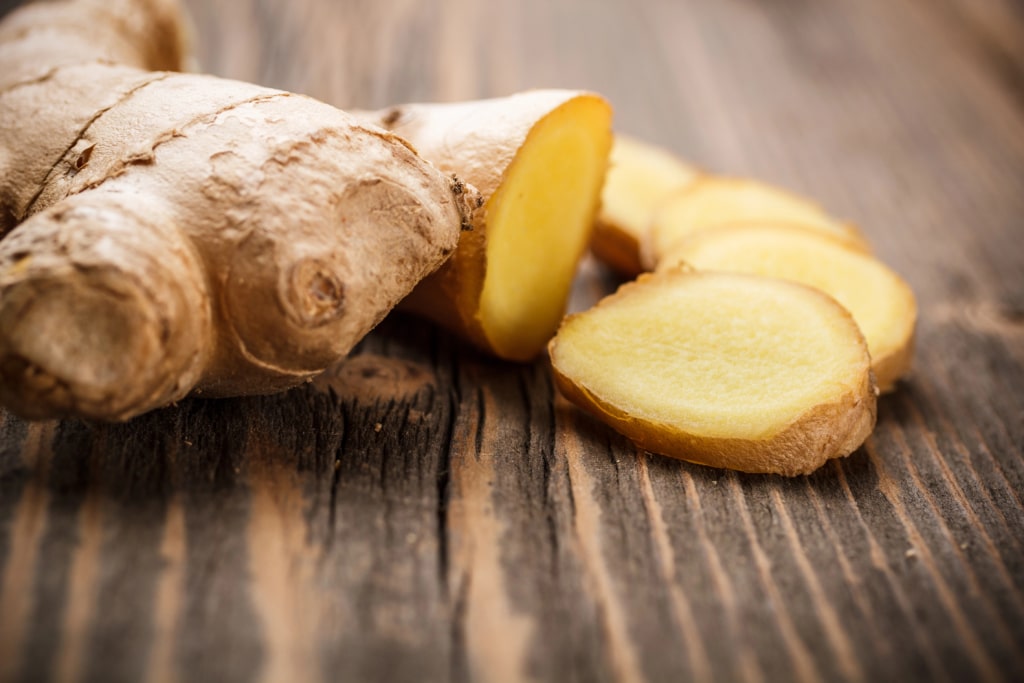
Ginger Roots Benefits for Immunity & Circulation
Ginger, renowned for its warming properties, is a powerful circulatory stimulant that promotes healthy blood flow throughout the body. As a diaphoretic, it gently raises body temperature and opens the pores, encouraging perspiration and supporting the body's natural detoxification process. This makes it especially beneficial for clearing out congestion, breaking a fever, or warming up cold hands and feet.
Ginger’s ability to invigorate circulation helps deliver oxygen and nutrients more efficiently, which can help boost immunity and vitality. Its deeply warming nature makes it an excellent remedy for combating cold conditions, whether due to seasonal changes, illness, or internal imbalances, helping to maintain overall warmth and wellness year-round.
Ginger Roots Benefits for Respiratory Health
Ginger is a powerful ally for respiratory health, acting as a warming expectorant that helps clear mucus from the airways and promotes deeper breathing. Its stimulating and antiviral properties make it particularly effective for soothing cold and flu symptoms, coughs, and sore throats. Whether used as an aromatic external or internal remedy, Ginger can support the body's ability to fight off respiratory infections and chest congestion.
One of the most effective ways to harness its benefits for the lungs is through a warming chest rub – either by using Ginger-infused oil or diluting Ginger essential oil in a carrier oil. This method not only delivers its therapeutic properties directly to the respiratory system but also provides comforting warmth to the chest, helping to loosen phlegm and promote clearer breathing.
Ginger Root Benefits for Topical Use
Ginger has long been used topically to relieve muscle aches, strains, and joint pain, thanks to its powerful rubefacient, analgesic, and anti-inflammatory properties. It is considered anti-rheumatic, making it especially beneficial for easing arthritis, stiffness, and chronic pain.
One of Ginger’s unique therapeutic actions is its role as a counterirritant – a substance that creates mild surface irritation to help distract the nervous system from deeper pain. By producing sensations of warmth or tingling, Ginger can potentially override pain signals, promoting relief in the affected area while also increasing circulation to support healing. To harness Ginger’s benefits topically, you can dilute the essential oil in a carrier oil for massage or create a Ginger-infused oil for long-term use. Read how to dilute essential oils and learn proper dilution ratios in our free Essential Oil Dilution Chart.
Unlock Your Free Issue Of...
🌿 The Aromatic Medicine Garden Membership 🌿
Are you ready for a deeper, holistic dive into the world of aromatic plants? See what our membership is all about with your free sneak peek issue, including an hour-long plant talk and a 21-page plant monograph pdf.

Ginger Root Aromatherapy Benefits
Ginger root is a powerful aromatic medicine that enlivens both the mind and spirit. At the heart of its influence are organic compounds called ketones, which have a unique affinity for mental clarity. When diffused or inhaled, Ginger’s rich, spicy aroma cuts through mental fog, helping to dispel sluggishness and awaken sharper focus. It acts as a natural stimulant, bringing a sense of openness and alertness, making it an excellent ally for those struggling with indecision, distraction, or creative blocks.
Beyond its effects on the mind, Ginger’s heating energetics stir movement and motivation in the emotional realm. It is an herb of transformation, counteracting stagnation and inspiring action. For those feeling stuck – whether in routine, relationships, or personal aspirations – Ginger rekindles the inner fire needed to take bold steps forward. This warmth isn’t just about physical energy; it also fuels emotional courage, empowering individuals to pursue their deepest desires with confidence.
For anyone feeling depleted, overwhelmed, or uninspired, Ginger offers a revitalizing spark. It provides the drive to establish healthier routines, follow through on goals, and manifest one’s true potential – even when exhaustion or self-doubt makes it feel impossible. As a root, Ginger is deeply grounding, offering stability while simultaneously fueling forward momentum. It helps anchor us in who we truly are, providing the motivation and courage to step fully into our most authentic selves.
Ginger is the ultimate catalyst – an herbal force that dissolves hesitation, ignites passion, and burns away procrastination. Whether used in aromatherapy, herbal medicine, or daily rituals, this fiery botanical reminds us to move, create, and embrace life with boldness and clarity.
Safety Precautions
Even though there have been scientific studies on Ginger for morning sickness, some sources advise against the internal use of Ginger during pregnancy. Ultimately, Ginger’s safety during pregnancy depends on individual circumstances, and it's best to consult a qualified healthcare practitioner for personalized guidance.
Ginger is generally considered safe for topical use, but as a counterirritant, it may cause sensitivity in some individuals. To minimize the risk of irritation, it's best to perform a skin patch test before applying Ginger-infused oils or essential oils. Additionally, Ginger essential oil can be mildly phototoxic if applied undiluted or in high concentrations, so it’s important to dilute it properly before use.
Note: Ginger (Zingiber officinale) is not related to the wild Gingers (Asarum spp.) found in the Northern Hemisphere that grow roots with similar aromatics. Asarum spp. should not be consumed because it contains aristolochic acid, a compound linked with irreversible kidney damage.
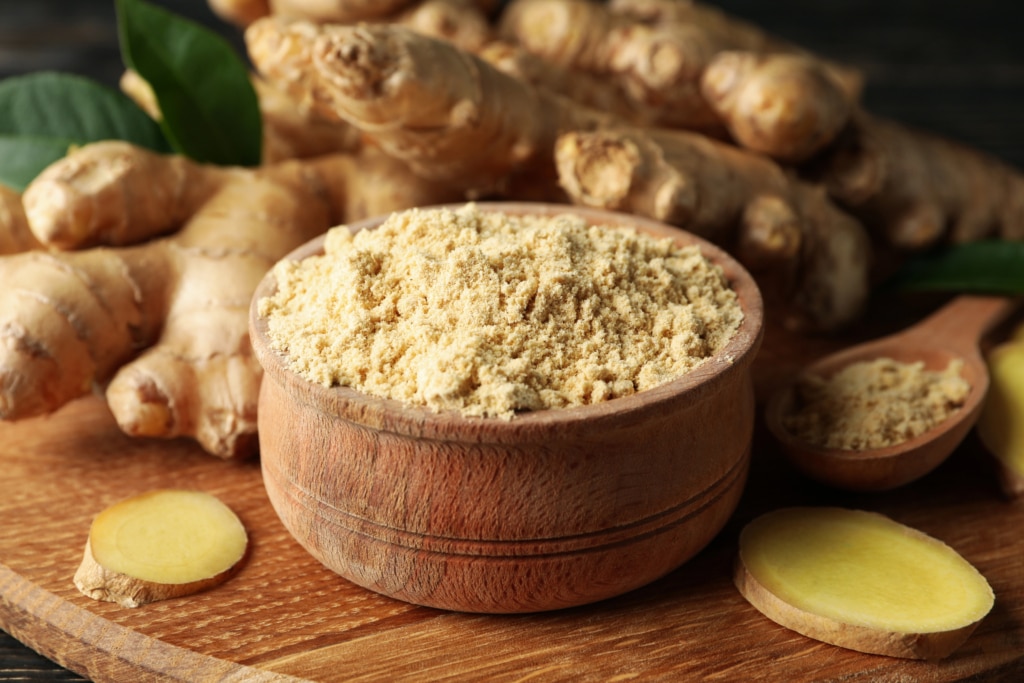
Ways to Use Ginger Root in Herbalism & Aromatherapy
How to Make Ginger Root Tea
Drinking Ginger root tea is a delightful, warming way to experience this herb’s powerful benefits. While you can make a Ginger root tea infusion by steeping the root in hot water for 15 minutes and then straining it, nothing compares to the rich, bold flavor of a Ginger root tea decoction.
To make a decoction, simply simmer fresh Ginger root in water, allowing its beneficial compounds and vibrant flavor to fully infuse. This method extracts the full essence of Ginger, offering a deeper, more aromatic tea that highlights the root’s unique therapeutic qualities.
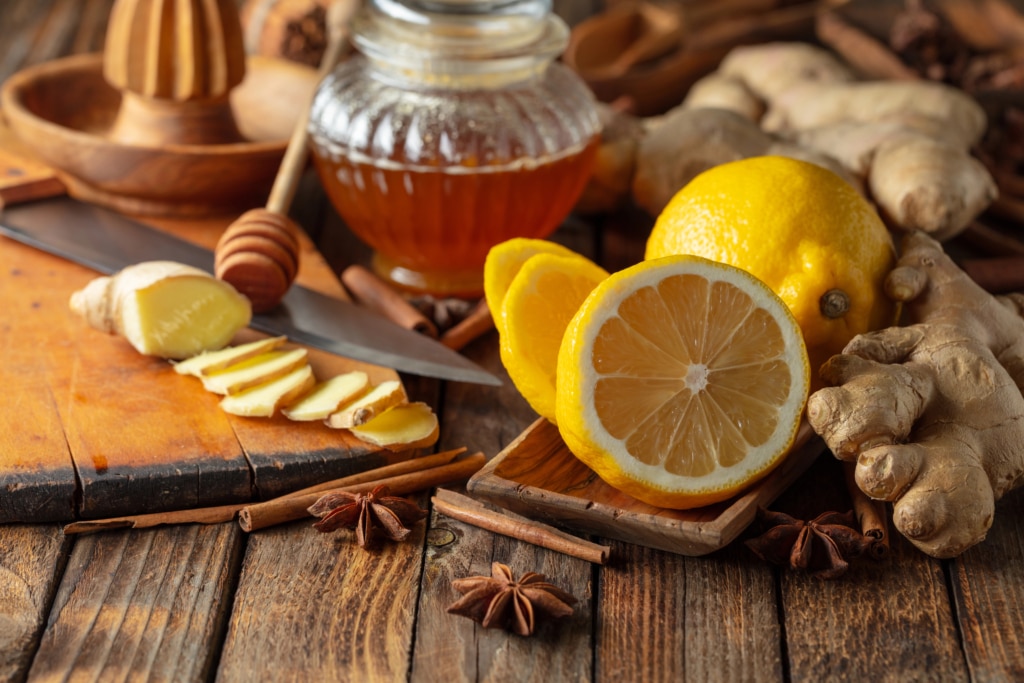
How to Make a Ginger Root Tea Decoction
Ingredients & Tools:
2 tsp freshly grated Ginger root
2 cup water
Grater
Stove pot
Fine mesh strainer
1. Prepare and peel your fresh Ginger root. You can peel the Ginger root using a knife, peeler, or the edge of a spoon. (Ginger peel can be left on if you prefer, but peeling ensures a smoother taste.)
2. Grate the fresh Ginger using a fine grater. (If you don’t have a grater, chop the Ginger into small chunks using a knife.)
3. Place the Ginger root and water into a stove pot. Bring the water to a boil over medium-high heat, then reduce to a simmer. Be sure to keep the pot covered so the precious aromatic compounds don’t evaporate.
4. Let the Ginger root tea simmer gently for 15-20 minutes. The longer you simmer, the stronger and more concentrated the decoction will be.
5. After simmering, remove the pot from heat. Use a fine mesh strainer to strain the Ginger pieces from the liquid, pouring the Ginger tea into a mug or teapot. Enjoy!
Optional: Add a splash of lemon juice, a drizzle of honey, or your favorite sweeteners to taste. Lemon brings a refreshing citrus note, while honey enhances its soothing properties – perfect for balancing out the spiciness of Ginger. For an extra twist, experiment with additional ingredients like Cinnamon sticks, Turmeric, or Peppermint. If you prefer a spicer tea, simply increase the amount of Ginger or extend the simmering time. For a milder flavor, reduce the Ginger or shorten the simmering time to suit your taste.
DIY Ginger Chew Recipe
Traditional Ayurvedic ginger pastilles are a delicious and convenient herbal remedy that can be enjoyed regularly as a tonic to support digestion, promote warmth, boost immunity, and stimulate circulation throughout the body.
To make them, simply combine fresh Ginger juice with dried Ginger powder in a 4:1 ratio (four parts powder to one part juice), mixing until you form a thick paste. This paste is then rolled into small balls (pastilles) and stored in the refrigerator. Eat, and enjoy! This time-honored Ayurvedic practice offers an easy and effective way to incorporate Ginger's powerful health benefits into your daily routine.
Ginger Root Plant Monograph
Latin Name: Zingiber officinale
Other Common Names: Ginger, Common Ginger, Garden Ginger, Mahaushadha (Great Medicine in Ayurveda), and Vishvabhesaja (World or Universal Herb in Ayurveda)
Genus: Zingiber
Plant Family: Zingiberaceae
Parts Used: rhizome
Herbal Energetics and Actions: analgesic, antibacterial (mild), antidepressant, antiemetic, anti-inflammatory, antioxidant, antirheumatic, antiseptic, antispasmodic, antitussive, antiviral, aperitif, aphrodisiac, carminative, cephalic, diaphoretic, emmenagogue, expectorant, febrifuge, immune regulator, rubefacient, sialogogue, stimulant (circulatory, musculoskeletal, respiratory, reproductive), stomachic, tonifying
Body Systems Affiliation: digestive system, circulatory system, immune system, respiratory system, reproductive system, and muscular system
Aroma: warm, woody, sweet, spicy, fresh, pungent; slightly Citrus-like top notes

The Materia Aromatica Ebook features 20 in-depth plant profiles – just like the Ginger plant profile in this blog article – covering some of the world’s most renowned incense plants, including Frankincense, Agarwood (Oud), Balm of Gilead, Palo Santo, Sandalwood, Myrrh, and more.
If you're frustrated with piecing together scattered and unreliable information about using aromatic plants in herbalism, natural incense, and aromatherapy, then this book is your go-to guide!
Article Written By Melissa Szaro

References
1. Chang WP, Peng YX. Does the Oral Administration of Ginger Reduce Chemotherapy-Induced Nausea and Vomiting?: A Meta-analysis of 10 Randomized Controlled Trials. Cancer Nurs. 2019 Nov/Dec;42(6):E14-E23. https://pubmed.ncbi.nlm.nih.gov/30299420/
2. McParlin C, O'Donnell A, Robson SC, Beyer F, Moloney E, Bryant A, Bradley J, Muirhead CR, Nelson-Piercy C, Newbury-Birch D, Norman J, Shaw C, Simpson E, Swallow B, Yates L, Vale L. Treatments for Hyperemesis Gravidarum and Nausea and Vomiting in Pregnancy: A Systematic Review. JAMA. 2016 Oct 4;316(13):1392-1401. https://pubmed.ncbi.nlm.nih.gov/27701665/
3. Lete I, Allué J. The Effectiveness of Ginger in the Prevention of Nausea and Vomiting during Pregnancy and Chemotherapy. Integr Med Insights. 2016 Mar 31;11:11-7. https://pmc.ncbi.nlm.nih.gov/articles/PMC4818021/#sec8
© 2025 The Northwest School of Aromatic Medicine. All rights reserved.
*The statements above have not been evaluated by the FDA, and are for educational purposes only. This article is not intended to diagnose, treat, cure, or prevent any disease. This article should not be taken as medical advice. Please consult your physician before you use this information for health purposes.
